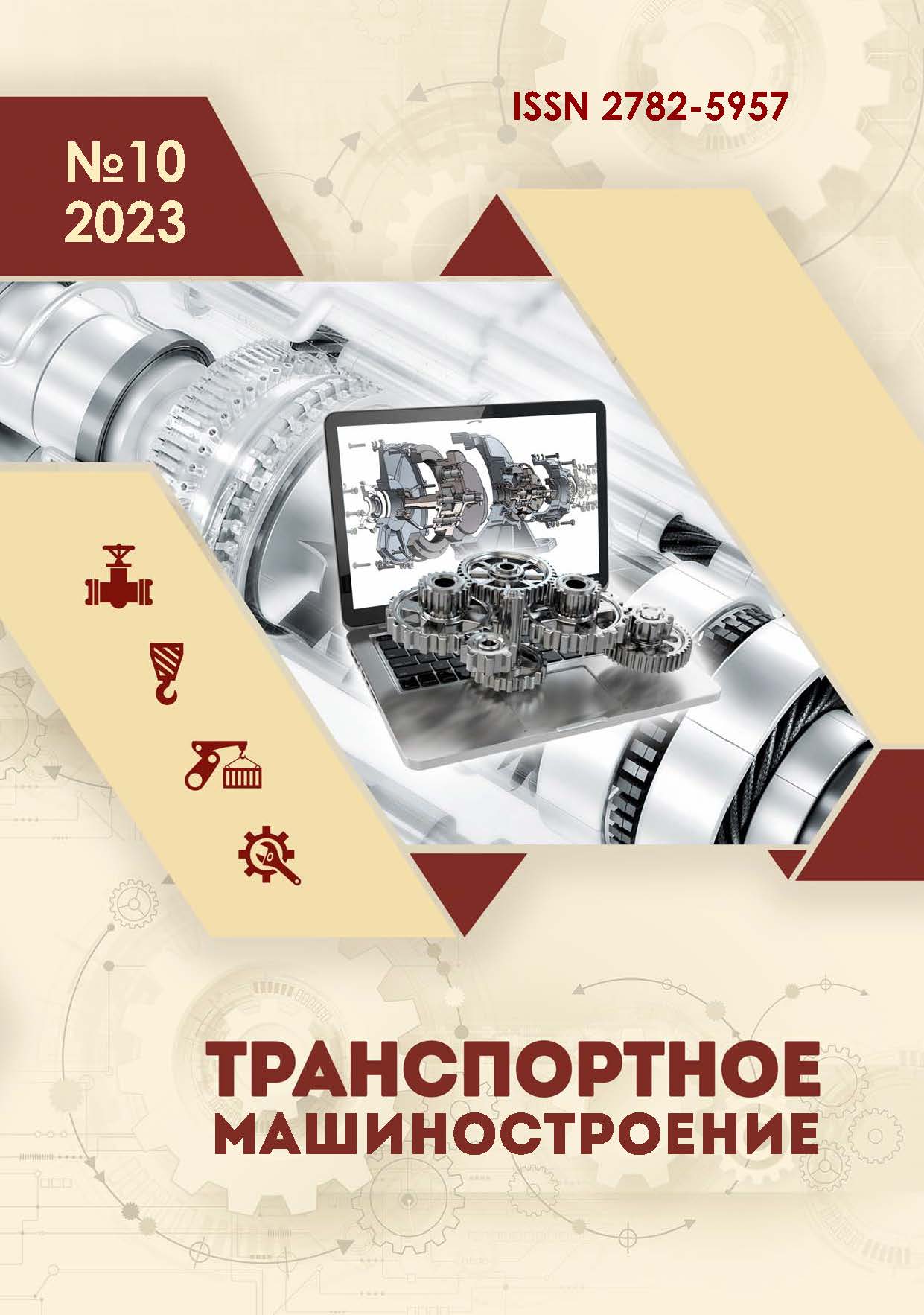from 01.01.2018 until now
Vladimir, Vladimir, Russian Federation
UDC 534.134
Russian Library and Bibliographic Classification 344
It is noted that the modes of forced and natural oscillations are taken into account to calculate strength of structural elements of transport vehicles and mechanisms. In this regard, the dynamic properties of the transported cargo are considered, and they are significantly different for solid and disperse materials. The study objective is to define the dynamic properties of a disperse material under harmonic vibrations. The research method is to present the status of the system under study in the form of a combination of its diametrically opposite maximum statuses. A common example of such a representation is the composition of a dry construction mixture – a combination of sand and cement (100% sand in the mixture is one maximum status, 100% cement is the diametrically opposite maximum status). A disperse material located on a platform performing harmonic oscillations is considered. To assess the instability (or stability) of the disperse material relative to the platform, a dimensionless quantity ξ is introduced. The main problem in determining the dynamic properties of a disperse material is the impossibility of calculating the average coefficient of dynamic friction, since its value is influenced by the interaction of dispersed particles with each other in the entire mass of the material, and not only with the surface of the platform. The description of the dynamic status of a disperse material as a composition of its unstable and stable statuses provides the key to solving this and similar problems. The opposite maximum statuses of the system under study may be comparable and incomparable in terms of quantitative assessment. The subject of the study are systems with equal maximum statuses. This method is universal and applicable to a wide variety of systems with different statuses and parameters.
disperse material, dynamic properties, status, system, combination, platform, stability, instability
1. Evseev DG, Sarychev YuN, Bespalko SV. Mathematical model of the car shock absorber based on viscous friction. Transport Engineering. 2022;1-2(1-2):89-95. doihttps://doi.org/10.30987/2782-5957-2022-01-02-89-95.
2. Pavlov VD. Mathematical models of resonance and antiresonance processes. Herald of the Ural State University of Railway Transport. 2021;1(49):17-27. doi:https://doi.org/10.20291/2079-0392-2021-1-17-27.
3. Pavlov VD. Mechanical power under harmonic influences. Modern Technologies. System Analysis. Modeling. 2022;1(73):30-38. doihttps://doi.org/10.26731/1813-9108.2022.1(73) .30-38.
4. Pavlov V.D. Mathematical model of an arbitrary frequency oscillator. Vestnik Mashinostroeniya. 2023;102(4):310-312. doi:https://doi.org/10.36652/0042-4633-2023-102-4-310-312.
5. Shchetinin VS, Sablin PA. Interaction of spatial ocssilations with roughness of surface worked by example of turning. Bulletin of Bryansk State Technical University. 2021;1(98):4-9. doi:https://doi.org/10.30987/1999-8775-2021-1-4-9.
6. Tikhomirov VP, Gorlenko AO, Volokhov SG, Izmerov MA. Magnetic field impact upon tribotechnical characteristics of permanent connections in relation to friction shock absorbers. Bulletin of Bryansk State Technical University. 2020;10(95):4-11. doi: https://doi.org/10.30987/1999-8775-2020-10-4-11.
7. Pavlov VD. Mechanical rotation stabilizer. Transport Engineering. 2022;11(11):32-38. doi: https://doi.org/10.30987/2782-5957-2022-11-32-38.
8. Pavlov VD. Controlled artificial elasticity in mechatronic system. Automation of technologies and production. 2022;1(25):20-22.
9. Pavlov VD. Flywheel with electromagnetic moment of inertia. Handbook. Engineering Journal with Appendix. 2022;9(306):53-55. doi: https://doi.org/10.14489/hb.2022.09.pp.053-055.
10. Kirichek AA. System for active monitoring of rotor bearings state in turbine generator of micro-turbine installation. Bulletin of Bryansk State Technical University. 2021;5(102):48-54. doi: https://doi.org/10.30987/1999-8775-2021-5-48-54.






